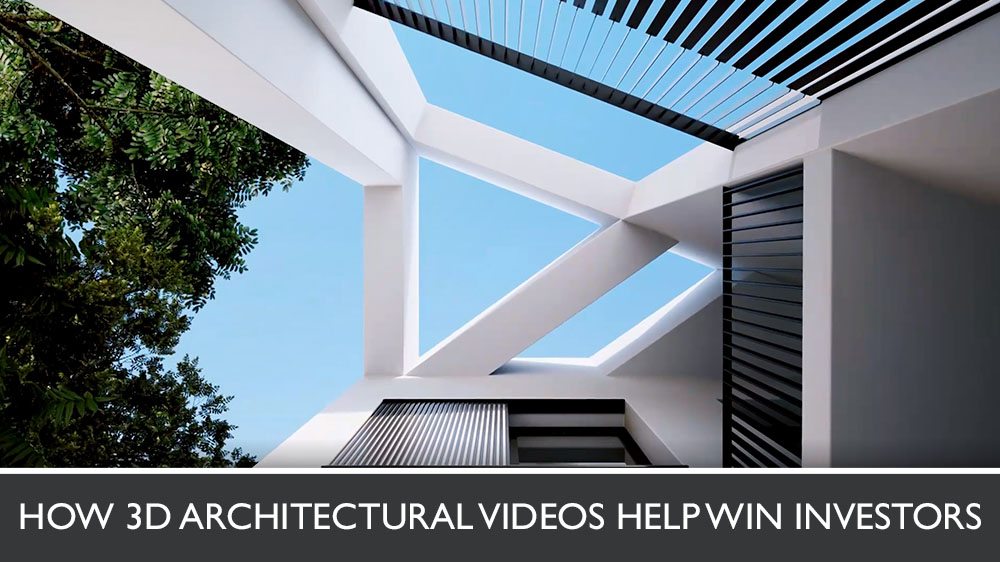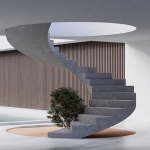Every architect knows that designing an interior or exterior is not the hardest part of the project. The real challenge is to get an approval and funding from the stakeholders. For this, the architecture specialists prepare presentations, during which they showcase the selling points of the projects to potential investors.
However, convincing stakeholders to support an architect’s vision is not easy at all. Especially with the help of classic means of presentations, such as diagrams and drawings. The issue is that these materials show all the technicalities and selling points schematically, so the investors just do not understand most of the information. This way, they can get bored at a presentation and dismiss the project — even the most brilliant one.
But this scenario can be prevented if the architect opts for 3D animation for construction. With 3D videos, getting project approvals is easier than ever. Let’s explore 5 ways CGI architectural animation helps sway investors!
#1. CG movies show projects in realistic quality
To look convincing, the offered design needs to be shown in all its glory. And this is where 3D video comes in handy. Modern CG films are indistinguishable from live-action ones, and it applies to every part of the footage. For instance, materials used for the building can be made to look either brand new, or given a vintage touch, in case it’s a design feature. Metals, stone, glass, fabrics — all so real that a viewer can almost feel them! Masterfully layered lightning in a 3D animation for construction amplifies the wow-factor and helps draw attention to the selling points. To top off the spectacle part, 3D artists add special effects, like depth-of-field and chromatic aberration. As in a 3D movie all the beauty is shown in motion, it will give stakeholders a truly impressive experience during the presentation.
CG footage can look especially stunning if the 3D specialists use multiple POVs: panoramic shots for showing a bigger picture, close-ups for details and selling points, panning shots and birds-eye views to let the viewer drink in the spectacle. Combining different points of view in a 3D animation for construction will not just show viewers how the building will look — it will help tell a story about it!
#2. CG animation takes the viewer on a virtual journey
One of the ways to sway investors is to make them feel personally involved in the project. And 3D animation for construction can do just that. Not in literal sense, but it can turn viewers into “visitors”. How so? The secret is that professional 3D videos are based on a well-crafted scenarios, so they can take the audience to real virtual journeys.
With the help of the right sequence of POVs, a simple walkthrough can easily turn into a dramatic experience, creating a lasting impression on the sponsors. The viewers feel like they are taking a virtual trip to the future dwelling. Watching a 3D animation for construction, the audience can explore every inch of the location, “walk” in the courtyard, and finish off with a slow pan, savouring the beauty of the scene. To intensify the effect and make a journey more exciting, 3D artists can add a soundtrack to a CG video.
#3. Digital animation explains technical details without words
One of the most challenging parts of presenting design is clarifying its technical side — structural integrity of the building, functionality of devices and mechanisms inside it, specifics of layout, and so on. It is easy to explain these things to a trained professional, but not to investors who usually do not have an architectural background. Therefore, one of the key elements of a successful architecture presentation is making technicalities as understandable as possible.
And 3D animation for construction is the right tool for doing that. That is because 3D videos show, not tell. So, with a CG movie, there is no need to explain why chosen technical solutions are functional — the footage showcases them in photoreal quality and in action, with cinematic zooms and pans. This way, the potential investors can get a complete understanding of a project’s technical side. Which is likely to dispel their doubts about sealing the deal.
#4. CG videos can showcase buildings within future environments
A construction project may be visually and functionally great, but there is one more point that matters — the surroundings. Normally, an architect would have to explain the features of the future properties’ location as well as how the dwelling and its surroundings will work as a whole. But the problem is that verbal explanations don’t paint a vivid picture. Does 3D animation for construction make a difference? Absolutely.
That’s because 3D studios have vast libraries of assets for recreating any kind of environment. So, a 3D video can showcase the future building in any context. A house in a forest, a mountain resort, a seaside hotel, an office in a dense urban area — everything can be shown with CGI!
3D movie can even demonstrate the dwelling in a real surrounding, not in a digitally recreated one. For this, the architect will need to film the actual location of the future construction site with a drone and send it to a 3D visualization studio together with a brief. The 3D artists will create a 3D model of the exterior and “place” in a real video. This way, the architect will get 3D animation for construction where the future house is shown in its actual context. Which is bound to impress the audience. After witnessing how of the property and its surroundings complement each other, the potential sponsors will be more likely to approve its construction and fund it.
#5. Architectural animation helps build up reputation
If an architect builds up a high reputation, investors would be more willing to approve his designs. So, how to secure a better standing within architectural community? For this, the professionals have to demonstrate achievements and skills. And to display that, the architects need portfolios filled with lots of photos of their successes. But taking pictures of the completed designs can be difficult or outright impossible. For one, the building has to be built to film it, which may take months or even years. And even if the construction is finished, there may be an NDA that prevents architects from filming the result.
That’s where 3D videos help a lot. The thing is that 3D animation can showcase the final outcome of the projects before they have even entered construction stage. Which means that the architect will have more than enough high-end materials to fill the portfolio with. So, the investors will we able to view the best works and form a positive opinion about the specialist before the presentation even starts.
With 3D animation for construction, getting project approvals becomes easier than ever. 3D videos demonstrate the beauty of design, they explain all technicalities of a building with no words, and can show it within an expected context. With 3D movies, an architect can take the viewers on a virtual journey that will create a lasting impression and help seal the deal with ease. On top of that, CG video makes for a great portfolio filler — to make sure an architecture professional never runs out of new clients and sponsors.
Want to impress investors deeply with your projects? You’ve got a trump card right here! Contact us for a 3D architectural animation and sway stakeholders easily!





Good point about the journey
Hiya very nice site!!
Good article with an excellent way of presentation. Keep it up. Thanks for sharing.
I’ve already bookmark this article. Thanks for posting!
It’s awesome to visit this web page and read the views of professionals
Cool, thanks!
I admire what you have carried out here! Such a rare topic and the info is far from basic. Thank you for sharing your expertise!